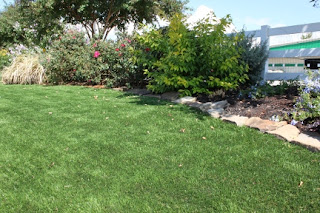No, not that kind -- a homemade spin on a traditional Italian sauce. When I was growing up, we called this "Spaghetti Roast," but it's really a sort of ragù, long-simmered and meaty.
I don't use a recipe when I cook this, but I tried to measure things in case you want to give it a try. It's a forgiving sauce. If you don't like a certain ingredient, don't add it. Feel free to substitute whatever you like!
 |
| Brown a little better than this! |
I love Italian sausage, so I start with that. I browned about a pound of Italian sausage in my largest, heaviest pan over high heat. Sweet, hot, it doesn't matter. My sausage was ground. When it's in a casing, I slice it into half-inch pieces. After the sausage is browned, remove it to a bowl. There should be some fat still sizzling in the pan. If not, add a small dollop of olive oil. Next, add a 2-3 pound chuck roast. Or whatever sort of meat you like when you make pot roast. Brown well on both sides. I probably didn't brown this one quite enough. When the meat is browned on both sides, remove it to the bowl.
 |
| Bell pepper, onion and celery: the holy trinity |
Next, add a mix of chopped vegetables. Today I used 2 stalks of celery, almost a whole white onion and a leek that was leftover from something else. Also, a whole green pepper. Watch the heat -- you want to brown these vegetables but not burn them. When the vegetables are almost tender, add a few cloves of chopped garlic. How much you add depends on how much you like garlic.
 |
| Seasoned but not cooked |
Let the garlic cook for a minute or so, just until you can smell it. Now deglaze the pan. Usually I just add the tomato sauces, but I was lucky this morning and had a little bit of leftover red wine. Into the pot it went. I heated the wine, scraping up all the browned bits from the bottom of the pan. Then I added about 100 ounces of tomato-type products: tomato sauce, canned diced tomatoes, stewed whole tomatoes. Again, your choice. Around my house, people give you a funny look if there are too many whole tomatoes in the sauce, so I use 2 large cans of tomato sauce, 1 large can of diced tomatoes, and a small can of whole tomatoes.
Here's the fun part. You flavor the sauce with anything your heart desires. I use oregano, basil, crushed red pepper flakes, salt, black pepper, a teaspoon of white sugar, two bay leaves and fennel seeds. If you have tough old gardener hands, you just pour the seeds into your hand and mash them together between your palms, mortar and pestle style. The more Italian sausage I use, the less fennel I put in. You have to taste as you go, but I start with about half a tablespoon of dried oregano, a tablespoon of dried basil, a teaspoon of fennel seeds and a half-teaspoon of crushed red pepper. Salt and pepper to taste.
 |
| Not too hot! |
Now nestle the browned meat down into the sauce, and bring just barely to a boil. Then turn the heat way down, cover the pot and let it cook on very low heat, all day. Actually, at this point, you could put the whole thing into a crockpot and forget about it. I usually don't -- just one more thing to wash! The idea is to cook a very long time, though, on very low heat. Don't simmer too hard or the meat will be tough.
 |
| Shredded into bite-sized pieces |
After a few hours, take the chuck roast out of the sauce and let cool. Then shred the meat into bite-sized pieces, using your fingers. That way, you won't miss any stray pieces of fat or tendon that you want to remove.
 |
| Serve over hot cooked pasta! |
Spoon the cooked meat back into the sauce and stir well. You can remove the bay leaves before serving if you like, but I don't. Whoever gets the bay leaf in the plate gets to kiss the cook!
This recipe made 20 cups of sauce that freezes well. Make it once and you can eat like a king every Sunday for the better part of autumn!

























































.jpg)



